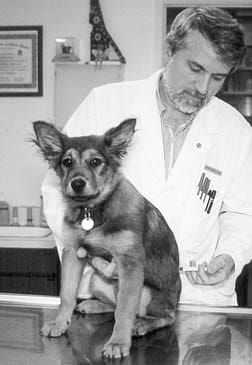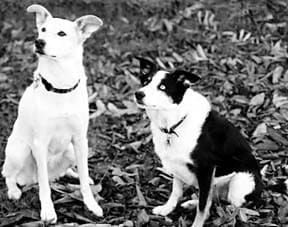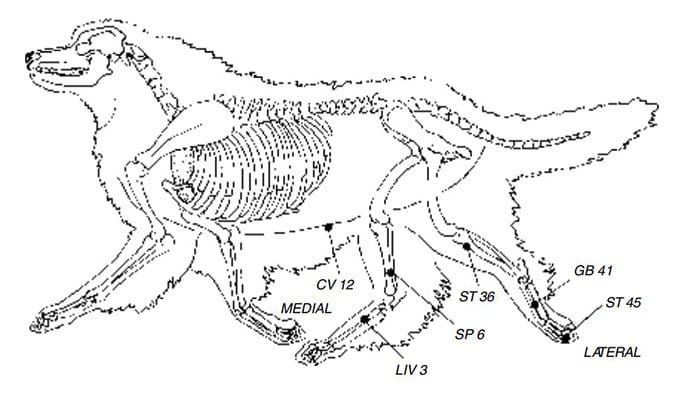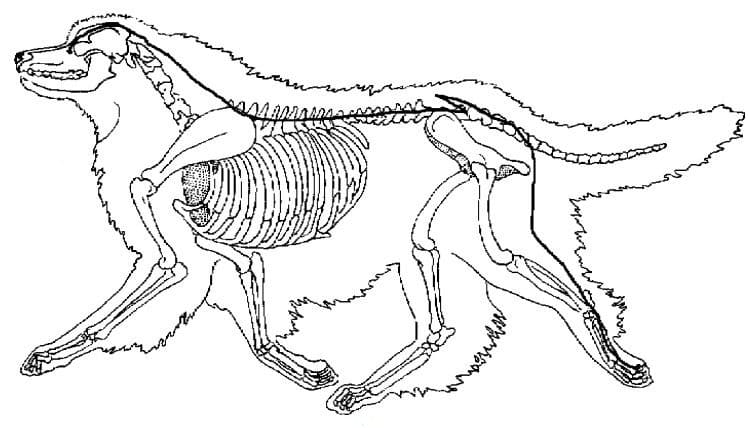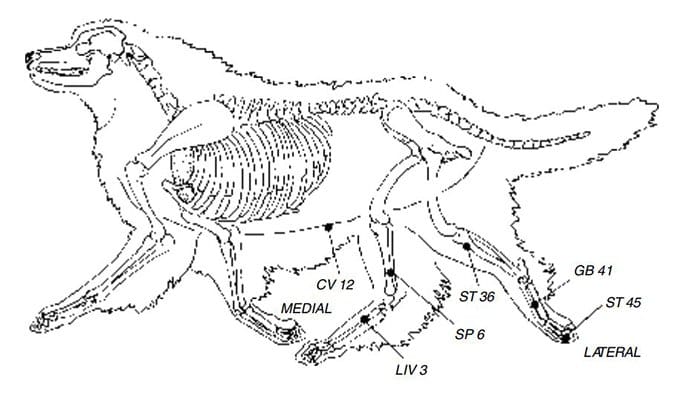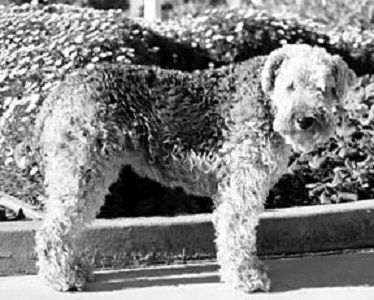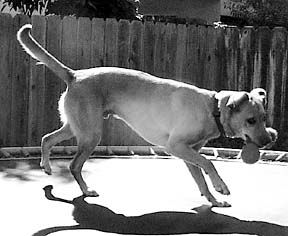DOG CANCER DIET: OVERVIEW OF WHAT TO FEED YOUR DOG
1. Reduce the carbohydrates your dog eats. Carbs cause a net energy loss to the cancer patient, but are readily utilized by cancer cells.
2. Use fish oil supplements (high in omega3 fatty acids ) to reduce or eliminate some of cancer’s metabolic alterations.
3. Feed the most appetizing food you can find. Anorexia and weight loss will speed your dog’s death.
Ask any dog owner about his biggest health fears for his pet, and his response is likely to include cancer. It’s a leading cause of death in canines and can be indiscriminate, striking young and old dogs alike. According to a 1997 Morris Animal Foundation study, cancer claimed the lives of one of four dogs who participated in the study, while 45 percent of dogs who lived to be 10 or older died of cancer.
Many cancers are life-threatening. Although they can be addressed through conventional veterinary treatments, including surgical removal of tumors, chemotherapy, and radiation therapy, they may not always be cured, so post-diagnosis regimens often focus on simply creating the best possible quality of life for the time the dog has left.
Over the past 10 years, compelling evidence has emerged that one of the keys to creating that better life can be found in a surprising place: the dog’s food bowl. Experts acknowledge that one way to deal with cancer is to take charge of what the canine cancer patient eats.
How Cancer Alters the Metabolism of Dogs
Veterinarians studying canine cancer have long known that the disease alters a dog’s metabolism. The cancer-stricken dog will utilize carbohydrates, fats, and proteins in very different ways than his healthy counterparts.
In many cases, canine cancer patients will also exhibit what’s known as cancer cachexia, a condition in which an animal will lose weight despite taking in adequate nutrients. (Cancer cachexia occurs in up to 87 percent of hospitalized human cancer patients, and because the incidence of malignant disease is higher in dogs than in humans, there is reason to believe that cancer cachexia is at least as significant a problem in veterinary patients.) Dogs with cancer cachexia show a decreased ability to respond to treatment and a shortened survival time.
Greg Ogilvie, DVM, Dip. ACVIM, and his colleagues at Colorado State University’s College of Veterinary Medicine and Biomedical Sciences are regarded as the top experts on canine cancer in the United States. In 1995, Ogilvie coauthored a landmark textbook, Managing the Veterinary Cancer Patient, that further describes the metabolic changes that occur when a dog contracts cancer.
According to the text, the most dramatic metabolic disturbance occurs in carbohydrate metabolism. Cancer cells metabolize glucose from carbohydrates through a process called anaerobic glycolysis, which forms lactate as a byproduct. The dog’s body must then expend energy to convert that lactate into a usable form. The end result? The tumor gains energy from carbohydrates, while the dog suffers a dramatic energy loss.
In a dog whose cancer is yet undiagnosed, this can be disastrous. What is the average dog owner’s first response when his dog starts losing weight? He generally increases the dog’s food ration – and if that food is a conventional kibble containing lots of carbohydrate-heavy cereal grains, he ends up throwing gas on the flames, so to speak. The dog does not benefit from the increase in carbohydrate-laden food, but his cancer does.
Another metabolic alteration seen in dogs with cancer cachexia is that protein degradation exceeds protein synthesis, resulting in a net loss of protein in the dog’s body, contributing significantly to his weight loss as his muscle mass is stripped away. This net protein loss results in decreased cell mediated and humoral immunity, gastrointestinal function, and wound healing.
According to Dr. Ogilvie, the majority of weight loss in cancer cachexia is due to the depletion of body fat, which (like protein) gets broken down at an increased rate in the cancer patient. However, unlike carbohydrates and protein, an increase in dietary fat does not seem to benefit canine cancer tumors. Fortunately, the dog’s ability to utilize fats as an energy source is unimpeded.
One interesting consequence of the metabolic change: it appears to be permanent. Once a dog has cancer, the metabolic processes remain altered even if he goes into remission.
Adjust Your Dog’s Diet Accordingly
Understanding these metabolic changes can help us formulate a diet that maximally benefits the dog, and minimally benefits his cancer. Well-nourished patients not only exhibit greater overall health, they also display an increased tolerance of veterinary interventions (such as surgery, radiation, and chemotherapy), and an increase in immune responsiveness.
Dr. Ogilvie modestly points out that the “ideal” dog cancer diet is not yet known, but his thinking on the topic is way ahead of most veterinarians. He and his associates at Colorado State have shown huge progress in developing a diet plan that can reduce the effects of cachexia – nourishing the dog and not the cancer. The basic framework suggests that the diet should be comprised of a relatively low amount of simple carbohydrates, modest amounts of fats (especially omega-3 fatty acids), and adequate amounts of highly bioavailable proteins.
Numerous studies have demonstrated that a high-fat, low-carbohydrate diet contributes to a higher probability of remission (when given in conjunction with chemotherapy) and to longer survival time.
The evidence is so compelling, in fact, that Dr. Ogilvie and a team from Colorado State worked with Hill’s Science & Technology Center to create a dog food specifically formulated for the needs of the cancer-stricken canine, Hill’s Prescription Diet n/d. It came on the market in 1998 after almost a decade of study.
“This type of nutritional concept is something that’s backed up by literally hundreds of studies, both in lab animals and people, and in clinical trials with dogs,” says Philip Roudebush, DVM, Dip. ACVIM, a veterinary fellow for Hill’s. “Unfortunately, a lot of people don’t know that – veterinarians as well – but to me, it’s about as well validated a concept as we have in nutrition.”
Because the metabolic changes that occur in a cancer-afflicted dog are permanent, even if his cancer goes into remission, feeding this adapted diet may be necessary for the remainder of the dog’s life.
What’s In an Anti-Cancer Diet for Dogs?
While the experts don’t all advocate the same approach to nutrition and cancer, they do agree on one thing: don’t try this on your own. It’s essential that your vet works with you on formulating a diet that meets your dog’s specific needs, especially if your pet is undergoing any sort of additional treatment such as chemotherapy. Even supplementation is discouraged without the input of a professional.
But if your practitioner suggests you try an altered diet by preparing homemade meals, here are some of the things he might recommend.
1. All ingredients should be fresh, highly bioavailable, easily digested, and highly palatable, with a good taste and smell.
Many cancer patients lose their appetite, either due to their treatments or illness; these dogs must be tempted to eat, a lot.
Note: Veterinarians have a variety of pharmaceutical appetite stimulants that may be helpful for keeping an inappetent dog eating. The goal is to prevent anorexia and weight loss at all costs. If a canine cancer patient stops eating, the veterinarian should consider “enteral” feeding – using either a nasogastric tube (which goes through the dog’s nose and throat and into his stomach) or a gastrostomy tube (which is surgically placed in the dog’s stomach and emerges from the dog’s side). Such measures, while dramatic for the owner, can be of enormous value to the patient and are generally of short duration.
2. Organic foods.
Conventional veterinarians may beg to differ, but holistic practitioners of all kinds are quite comfortable with the numerous studies that link common chemical pesticides and fertilizers to cancer, as well as reproductive and neurological damage. Dr. Anne Reed, a holistic veterinarian in Oakland, California, recommends that her clients utilize organic meat as part of their anticancer diets. “Giving a dog as clean a diet as possible can only help,” she says. “I feel like the last thing the canine cancer patient’s body needs is to deal with the pesticides, antibiotics, and extra bacteria that tend to be in nonorganic meat. You don’t want their bodies to have to focus on clearing out toxins as well as fighting the cancer.”
3. Fresh, organic meats, either raw or cooked.
Fresh, clean, high-quality meat is both appetizing and highly bioavailable.
4. Fish-oil supplements.
Rich in omega-3 (n-3) fatty acids, which have been linked to tumor inhibition and strengthening the immune system, fish oil may be more readily absorbed by the dog’s body than a close cousin, flaxseed oil.
5. Vitamin C.
Known and used for its antioxidant properties, this vitamin can easily be given in pill form. Antioxidants neutralize free radicals as the natural byproduct of normal cell processes. In addition, antioxidants must be supplemented whenever omega-3 supplements are given.
6. Fresh vegetables.
Cruciferous veggies like broccoli and dark-green, leafy vegetables like spinach are healthy for any dog, but especially for cancer patients. According to the National Institutes of Health and the American Institute for Cancer Research, diets high in cruciferous vegetables – such as broccoli, cauliflower, cabbage, watercress, bok choy, among others – have been associated with lower risk for lung, stomach, and colorectal cancers in humans. According to the American Cancer Society, broccoli, in particular, is the source of many phytochemicals that are thought to stimulate the production of anticancer enzymes.
In addition, the fiber that vegetables provide is essential to maintain normal bowel health, which, in turn, is key to overall health. Pureeing the vegetables and mixing them into food may improve acceptance for some dogs, while others will be content to crunch them raw or lightly steamed.
7. Digestive enzymes.
Holistic practitioners often recommend these to help support the dog’s digestive abilities, especially during the transition to a new diet.
8. Garlic.
Small amounts, such as a clove a day, may be recommended. According to the National Cancer Institute, studies provide compelling evidence that garlic and its organic allyl sulfur components are effective inhibitors of the cancer process.
9. Safflower oil.
According to Lisa Barber, DVM, assistant professor at Tufts University School of Veterinary Medicine, there is some anecdotal evidence that this oil can help achieve remission in patients with a difficult form of lymphoma, epitheliotropic cutaneous T-cell lymphoma.
10. Limited carbohydrates.
If your vet promotes a raw diet, you might also look into pre-formulated offerings from companies like Primal Pet Foods and Steve’s Real Food. Their frozen offerings are convenient to store and easy to parcel out for meals.
Note: The costs for any of these feeding programs are not negligible. The packaged raw diets will run in the neighborhood of $45 – $50 per month to feed a 20-pound dog, while the Hill’s Prescription Diet n/d suggested retail price (which is subject to markup) is $1.50 – $2 per day for the same size animal, or $45 – $60 per month. The cost of homeprepared diets varies widely depending on the size of the dog, the type of meat used, and amount of supplementation.
Anti-Cancer Diet Details: What We Know and What We Don’t
A recent study coauthored by Dr. Ogilvie suggested using a diet with a ratio of less than 25 percent carbohydrate, 35 to 48 percent protein, and 27 to 35 percent fat, with more than 5 percent of the total food comprised of omega-3 fatty acids and more than 2 percent of arginine. (All these measurements apply to dry matter.)
Fish oil can be beneficial in an anticancer diet as both a fat source and a source of omega-3 fatty acids. These acids, also known as n-3 acids, have been linked in studies to tumor inhibition and enhancement of the immune system. Antioxidants are essential whenever n-3 fatty acids are used.
There has been much discussion of the potential benefits of other nutrients in an anticancer diet. Antioxidants such as vitamins C, E, and A have anticancer effects. Selenium, vitamins A and K3, arginine, glutamine, and garlic have been shown to be beneficial in some experimental settings. While promising, there is less evidence to support specific applications for these nutrients, although some veterinarians hedge their dietary recommendations and include these nutrients in some forms and amounts.
Feed Home-Prepared or Commercial Food to A Dog with Cancer?
If ever there was a good reason to feed a commercially prepared food, this is it. Feeding a commercial anticancer diet such as Hill’s Prescription Diet n/d, formulated with the assistance of Dr. Ogilvie and his associates at Colorado State, is a vast improvement on continuing to feed a dog’s regular kibble.
However, many holistic veterinarians – who, by and large, are more amenable to using nutritional therapies to treat many health conditions – recommend feeding canine cancer patients a home-prepared diet that meets Dr. Ogilvie’s basic anticancer, pro-dog outline.
For example, Anne Reed, DVM, a veterinarian at Creature Comfort Holistic Veterinary Center in Oakland, California, suggests that her clients prepare a diet that includes meat, vegetables, fats, and limited grains, as well as supplements such as vitamin C, garlic, and digestive enzymes. (Dr. Reed also uses other anticancer agents such as artemisinin, and Chinese herbs.)
Some veterinarians, including Reed, advocate a raw-food approach – although she’s careful to qualify this. Unless a client has experience preparing raw-food diets, Reed recommends preformulated commercial raw diets, such as those made by Primal Pet Foods and Steve’s Real Food, which are easier to handle and are nutritionally complete and balanced. But she doesn’t recommend raw food for every dog. “If a dog is on chemotherapy, radiation therapy, or very high doses of Prednisone or things that suppress the immune system, I’m very, very careful with raw food diets,” says Dr. Reed.
Nutritional Therapy for Cancer Treatment is Still A Radical Idea
Despite the very promising research in treating and supporting canine cancer patients with nutritional therapy, it’s not yet a cornerstone of conventional veterinary cancer treatment. “I believe that most veterinarians, including oncologists, recognize that diet can play an important role in moderating disease,” says Lisa Barber, DVM, Dip. ACVIM, an assistant professor at Tufts University School of Veterinary Medicine. “However, how this applies to clinical practice is unclear.”
Dr. Barber doesn’t advocate a wholesale change in diet in response to the news of cancer. “I tend to discourage owners from indulging their pets with home-cooked meals at the time of initial diagnosis,” she said, in part to avoid a pet getting used to a tempting diet. “If pets are given ‘tasty’ foods when they are feeling well, it will be more difficult to tempt them to eat when they are feeling poorly.”
Barber recommends a high-quality commercial diet supplemented with fruits and vegetables and encourages clients to consult a board-certified nutritionist to devise a sound, balanced feeding plan. Like many conventional veterinarians, she is averse to diets that include raw meat, citing fears of nutritional imbalances and of pathogenic bacteria such as E. coli, which can strain cancer patients’ immune systems.
Are Pet Lovers Leading the Anti-Cancer Diet Revolution?
However, owners who are desperate to do anything and everything for their beloved companions often do their own research, looking for more options.
Steve Drossner of Philadelphia became one such owner when his German Shepherd Dog/mix, Ginger, was diagnosed with hemangiosarcoma, a cancer that affects blood vessels. A tumor on Ginger’s spleen ruptured, and caused her to collapse.
After the spleen (and tumor) were removed, Drossner’s veterinarian felt that chemotherapy should be the next treatment – although the vet could make no promises regarding the treatment, since hemangio-sarcoma is such an aggressive, fast killer. After consulting with a holistic veterinarian, Drossner decided to skip the chemo, and instead, put Ginger on a home-prepared anticancer diet of cooked free-range chicken, brown rice, olive oil, organic vegetables, and supplements.
Although Drossner bemoans the expense, he doesn’t begrudge his dog the menu, which has helped keep Ginger alive for more than two and a half years. “Free-range chicken is $8.49 a pound,” he says. “It costs me $11 to $12 a day to feed her, but I really have no other options. I feel that if I made any changes to Ginger’s diet and she took a turn for the worse, I’d never forgive myself.”
Anya Hankison, of Oakland, California, is another person whose dog was diagnosed with hemangiosarcoma. Tessa, Hankison’s eight-year-old Yellow Lab, was diagnosed with the cancer in May 2003. After an operation in which Tessa’s spleen, gall bladder, and one liver lobe were removed, Hankison consulted her conventional vet to discuss the next steps in Tessa’s treatment.
“The oncologist gave me a life expectancy of 30 to 90 days post-surgery,” she said. “He didn’t give me any hope whatsoever.” Diet was not mentioned.
Hankison consulted holistic practitioner Reed for a second opinion. Dr. Reed suggested trying a raw diet combined with supplementation. While she made it clear this approach would not be curative, she did tell Hankison that Tessa’s remaining days could be healthier and happier.
“I really liked that,” Hankison said. “Dr. Reed’s approach sounded so natural. I didn’t feel like I was getting in the way of the natural course of life, and yet I was hoping to prolong it and give Tessa the best quality of life possible.”
Hankison took Dr. Reed’s suggestions to heart and transitioned Tessa to a raw-food diet, beginning with cooked meat and graduating to meals made up of raw, organic chicken, steak, hamburger, or buffalo meat, a variety of vegetables including broccoli, spinach, and carrots, and a range of supplements and Chinese herbs.
It wasn’t an easy change. “Dealing with raw chicken is hard, unless you’re buying just the breast. If you’re feeding a 70-pound dog twice a day, it can get really expensive,” says Hankison. Finding the organic meat was time-consuming, necessitating several trips a week to a nearby Whole Foods Market. Simply preparing meals for Tessa, who ate two of them daily, took 20 to 30 minutes.
Hankison also found it difficult to fit the supplements into her budget. She managed to find some generic substitutes and discovered that Oakland’s Chinatown offered better bargains than local naturopathic stores did, but the cost was still considerable. The challenge was exacerbated when Tessa had a bout of nausea and would refuse a meal.
“There were times where I’d have to make Tessa’s meal four or five times, and I’d have to take out one ingredient each time until she would eat it,” Hankison says. “When she wasn’t feeling well, I’d sometimes have to pare it down to no herbs, no salmon oil, and just chicken.”
Sadly, Tessa succumbed to her cancer on August 19, three months after her diagnosis, dying at home in Hankison’s arms. Although she survived only to the outer limit of her first veterinarian’s prognosis, Hankison believes the altered diet gave Tessa as much health as was possible in her last weeks and days. “Her energy levels were great. She felt really well, she looked healthy, and she healed (from her surgery) very, very well. Her quality of life was excellent, right to the end.”
Both Hankison and Drossner both say they have no regrets about trying the new diets, despite the expense and hassle. The results, they say, are worth it – happier dogs who can enjoy the time they have left, however long that might be.
Find A Progressive Veterinarian
No veterinarian worth his or her diploma would suggest that diet alone can cure cancer. The goal in anticancer diet management should be to maintain overall health, weight, and nourishment, which in turn will significantly assist the conventional veterinary treatments – all of which will help provide the best quality of life possible.
These are the stated goals of Hill’s anticancer diet – longer survival times, longer disease-free intervals, and improvement in overall quality of life – and they ought to be the goals of any veterinarian whose patient is fighting cancer.
Unfortunately, there are still numerous veterinarians in practice who are resistant (or just unhelpful) when questioned about a dietary contribution to cancer treatment. In these cases, our strong suggestion is to find another veterinarian to work with, fast.
C.C. Holland, a frequent contributor to Whole Dog Journal, is a freelance writer from Oakland, California.


